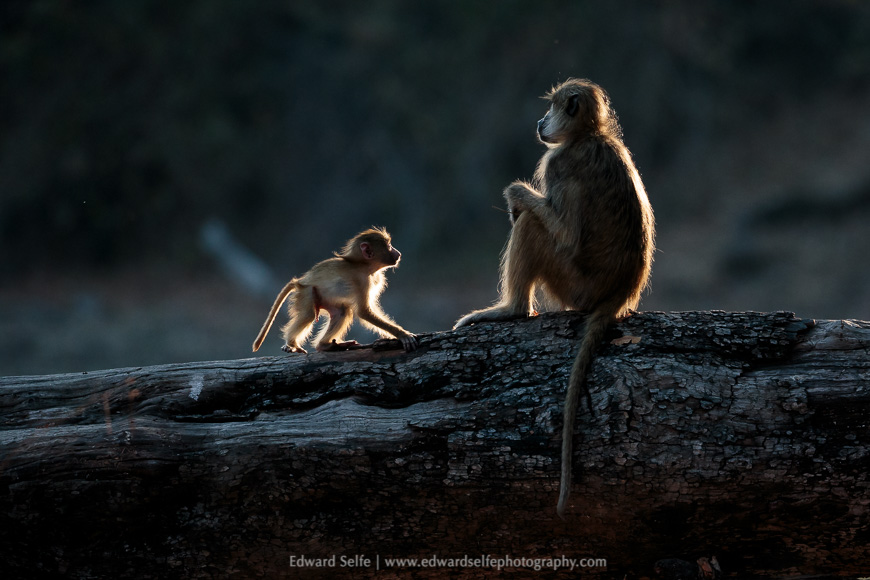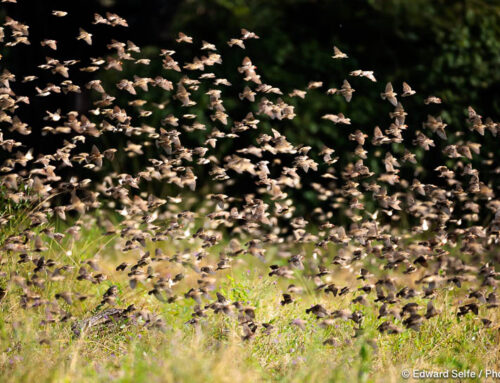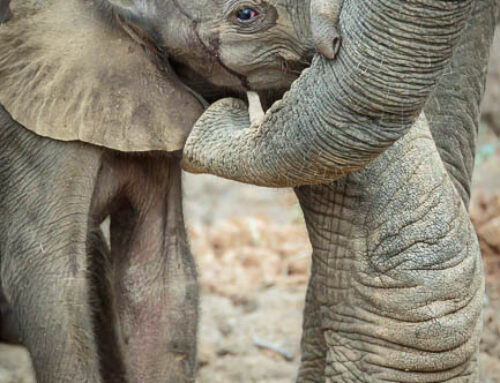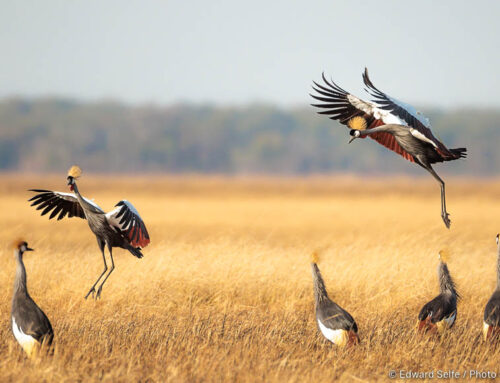Occasionally, mammals with unusual colouration show up around the world. Some of them are albino (lacking any pigmentation in the skin), some are leucistic (lacking some pigmentation) and others are melanistic (with a higher than normal level of pigmentation). In some cases, melanism becomes quite common in a population, like in the case of India’s leopards (panthers) and the southern African population of Gabar Goswhawks. Presumably rates of melanism in these species have increased because the dark pigmentation endows an advantage on that animal, or because the genetic code for melanism is on the same gene as another characteristic that bestows a benefit.
However, in general, extreme colour variations are rare in mammals, and they stay that way because very pale or dark animals often struggle to survive in their environment, and are perhaps less appealing as potential mates.
Albino animals do show up in the Luangwa; I remember a white impala and a there has been a sighting of a white kudu and recently of a white/pale civet. But they are rare, and therefore remarkable. However, we commonly see white baby baboons in the Luangwa Valley. This causes a lot of interest and suggestions are often made that these animals are leucistic or albinos. However, I have seen many of them – perhaps 100 – and I don’t believe this is the case. Here’s why:
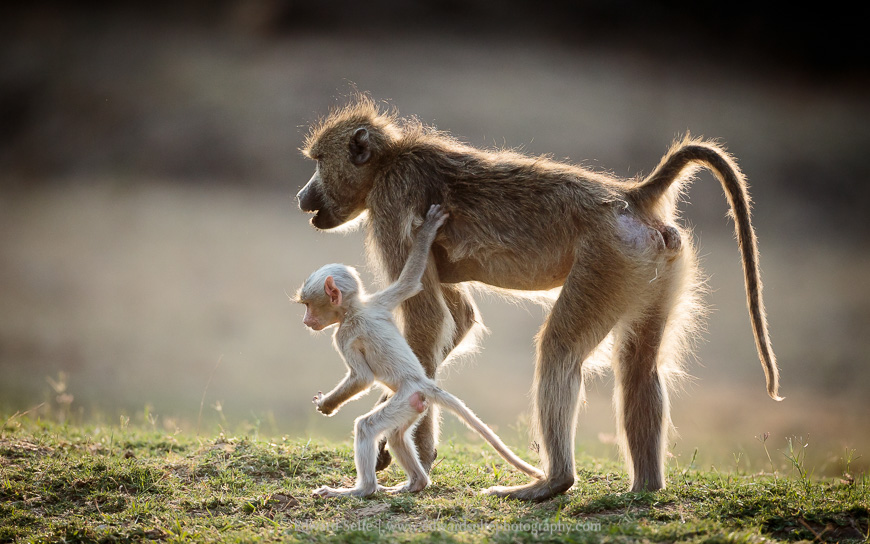
The young baboons that I have seen in Luangwa are certainly not albinos. They do not have red eyes, and there is some colour pigmentation in their skin, even from a very early age. They could be leucistic individuals, but in that case, they would maintain that colouration into adulthood….and we do not see any white adult baboons.
So, assuming they are all leucistic, and yet we don’t see white adults, where do they all go? The usual answer is that they are killed because they are more visible to predators, or because the troop rejects them. I have never seen any evidence of either of these suggestions. Young white baboons are treated just the same as other baboons in the troop – based on their mother’s social rank – and I have not recorded a higher mortality rate amongst the white youngsters.
OK – so what are these white individuals? Based on research into baboons in Zambia, it seem pretty clear that these baboons are showing a genetic trait from the overlap between Yellow baboons in the Valley and Kinda baboons on the escarpment and plateau. Here’s an explanation:
Yellow baboons (Papio cynocephalus) which live in the Luangwa Valley are born with very dark hair, which covers their bodies from birth. By about 2 months of age, these baboons have started to turn golden colour – like the adults – and only have a few dark patches remaining. Everyone who has watched baboons develop knows that this is the case.
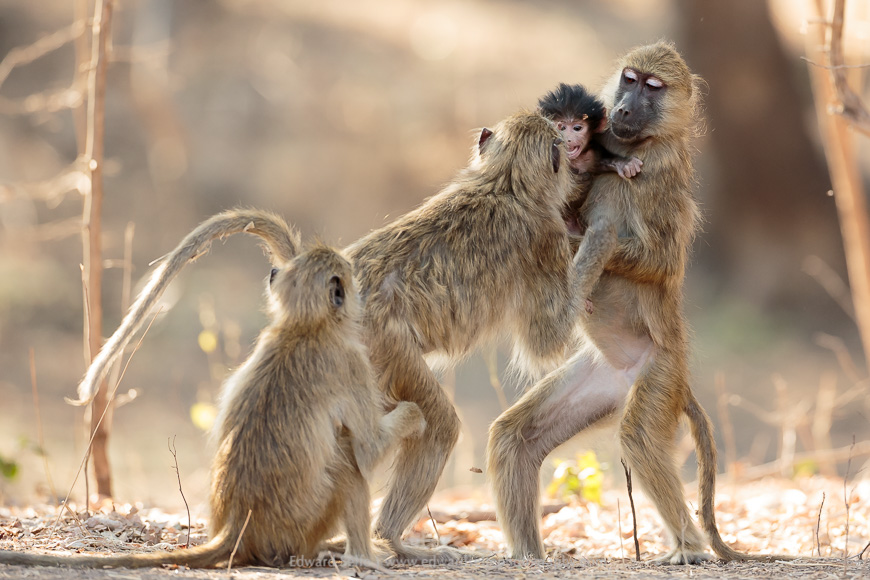
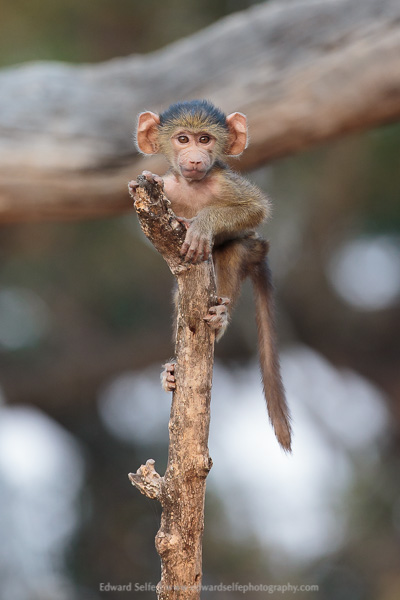
Kinda baboons, a species of baboons which occur on the Zambian escarpment, (Papio kindae) birth babies with white coats. Similarly, by about 2 months of age, these baboons lose this white colouration and develop adult golden coats.
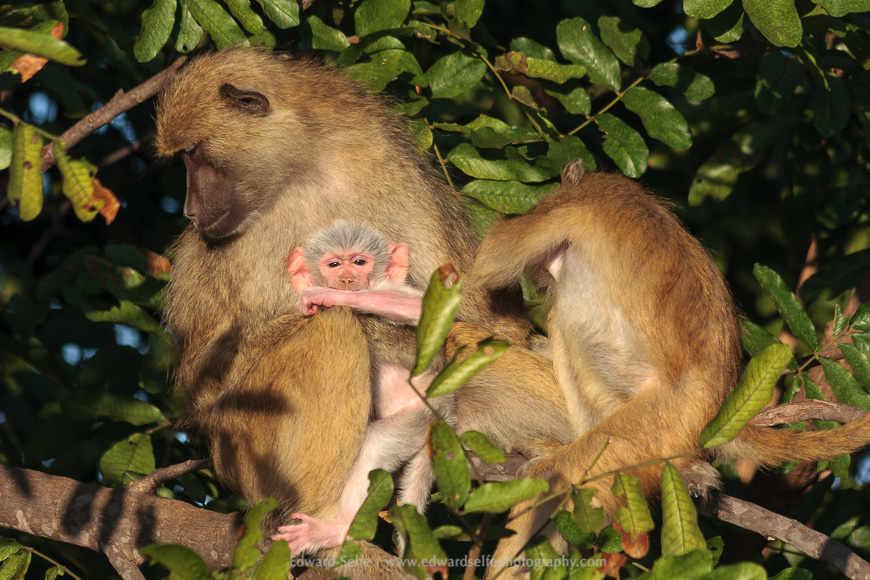
For a long time, no distinction was made between these two baboon species. Some people still maintain that Kinda baboons are a sub-species of Yellow baboons and classify them as P. cynocephalus kindae. One of the distinctions used to separate the two species is the colouration of their offspring – Yellows having dark babies and Kindas having white babies. But there has clearly been overlap between the two species for a long time, and there must be genetic mixing even now at the boundary of their ranges.
So it seems likely that the white babies we are seeing are the result of genetic cross-overs between Yellow and Kinda baboons. This is not particularly surprising since we have only recently split these two species, suggesting that they are extremely similar in many ways, and clearly able to interbreed.
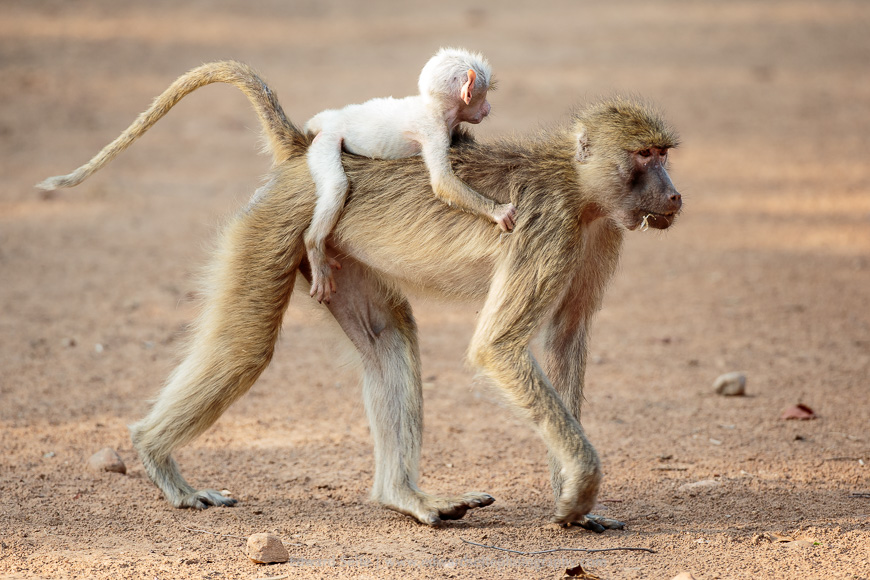
So there you have it, a discussion about the white baboons which are appearing in the Valley regularly. I would like to add that I am not saying that it’s impossible to find albino or leucistic baboons; in fact, it may be the case. But to be an albino, an individual must have red eyes, and lack any pigmentation in the skin. To be sure of leucism, it’s necessary to show that a baboon has passed the 8-10 week of age mark, at which point it should have developed adult colouration.
